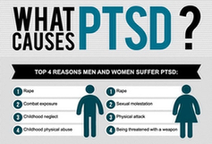hemoglobin a1c range chart
hemoglobin a1c range chart
The chart below illustrates the hemoglobin A1c range and what it means:
| HbA1c Level | Meaning |
|---|---|
| Less than 5.7% | Normal range for people without diabetes |
| 5.7% to 6.4% | Indicates increased risk for diabetes |
| 6.5% or higher | Indicates diabetes diagnosis |
| 7% or lower | Target range for most people with diabetes, according to the ADA |
| 7.5% or lower | Target range for some people with diabetes, according to other guidelines |
| 8% or higher | Indicates poor blood sugar control and may increase the risk of complications |
It’s crucial to remember that these ranges might change based on certain conditions, thus a healthcare expert should be contacted to identify the ideal goal range for each individual’s unique circumstances.
What is a good range for hemoglobin A1C?
A blood test called hemoglobin A1C (HbA1c) calculates the average blood glucose levels over the previous two to three months. For the majority of persons with diabetes, the American Diabetes Association (ADA) suggests a HbA1c goal of less than 7%. The objective may change, though, based on a person’s age, general health, and level of diabetes.
HbA1c is normally regarded as normal for those without diabetes when it falls below 5.7%.
It’s crucial to remember that the HbA1c aim and normal range might change based on the regulations of various organizations and nations. It’s always preferable to get advice from a healthcare practitioner when deciding on an acceptable target or range for a given person’s unique circumstances.
What is a normal A1C levels chart?
The ranges of hemoglobin A1c (HbA1c) are shown in the following graph:
| HbA1c Level | Meaning |
|---|---|
| Less than 5.7% | Normal range for people without diabetes |
| 5.7% to 6.4% | Prediabetes range, indicating an increased risk for developing diabetes |
| 6.5% or higher | Indicates diabetes diagnosis |

What is normal HbA1c by age?
Based only on age, no precise HbA1c goal is suggested. Regardless of age, the American Diabetes Association (ADA) advises a goal HbA1c of less than 7% for the majority of individuals with diabetes. Yet, the aim may change based on personal characteristics including general health, length of diabetes, and the existence of any complications. For instance, elderly persons who have a history of severe hypoglycemia or many health issues may have a goal HbA1c of 8% or greater.
It’s crucial to keep in mind that the HbA1c target and normal range might change based on several factors, therefore a healthcare provider should be contacted to identify the best target range for each individual’s unique circumstances. A single HbA1c measurement does not indicate short-term blood glucose management or changes since the HbA1c test evaluates average blood glucose levels over the previous two to three months.
How can I get my A1C down quickly?
It’s crucial to design a strategy to reduce your hemoglobin A1c (HbA1c) and manage your diabetes in collaboration with a healthcare expert. Nonetheless, the following basic advice might help you fast drop your HbA1c:
- Keep a note of your blood glucose readings and check your blood sugar levels periodically. This might assist you and your healthcare practitioner in spotting trends and modifying your treatment strategy.
- Change your eating habits: Consuming a balanced, nutritious diet will help you control your blood sugar levels. Eat a lot of nutritious grains, lean protein, veggies, and healthy fats. Minimize your consumption of processed and high-sugar foods.
- Regular physical activity can aid in better blood glucose regulation. Aim for 150 minutes or more of moderate-intensity exercise per week, or as directed by your doctor.
- Take medicine as directed: If you are using medication to control your diabetes, make sure you follow your doctor’s instructions.
- Control your stress: Stress might cause blood sugar levels to rise. Discover stress-reduction techniques that are healthful, such as yoga, deep breathing, or meditation.
While some of these tactics may help to fast decrease your HbA1c, it’s crucial to work with your healthcare practitioner to create a thorough plan for managing your diabetes in the long run.
what is a dangerous level of a1c
Hemoglobin A1c (HbA1c) levels of 6.5% or greater are indicative of diabetes, a dangerous illness that, if unchecked, can result in a number of health consequences.
It’s challenging to give a precise response about the HbA1c values that are regarded as harmful because the dangers of high HbA1c values rely on individual characteristics, such as general health and the existence of other medical disorders.
An HbA1c result of 8% or greater is typically regarded as having poor blood sugar management and may raise your chance of developing diabetes-related problems such nerve, eye, kidney, and cardiovascular disease. The hazards connected with high HbA1c levels might, however, differ significantly from person to person. As a result, a healthcare expert should be contacted to establish an acceptable target range for each individual’s particular circumstances.
a1c calculator
Based on a single HbA1c test result, a hemoglobin A1c (HbA1c) calculator can assist determine the typical blood glucose level. To understand and discuss the findings of a HbA1c test, a healthcare expert should be consulted as the calculator only offers an estimate and not an actual figure.
Based on a HbA1c test, use the following straightforward calculation to get the typical blood glucose level:
Average glucose (eAG) is calculated as (28.7 x HbA1c) – 46.7.
As an illustration, the anticipated average glucose level would be as follows if the HbA1c test was 7%:
(28.7 x 7%) – 46.7 = 154 mg/dL
The estimated average glucose level offered by the calculator is just that—an estimate. A healthcare provider should be consulted to establish an acceptable goal range for each individual’s particular circumstances.
a1c test
A blood test called a hemoglobin A1c (HbA1c) test determines the average blood glucose levels over the previous two to three months. The test offers details on someone’s long-term blood glucose management, which is crucial for treating diabetes.
A healthcare professional will draw a tiny sample of blood for the HbA1c test, often from an arm vein. The sample is subsequently delivered to a lab for evaluation. The test’s findings are often made public within a few days.
The HbA1c test is a crucial tool in the management of diabetes and can:
- Diabetes can be identified if the HbA1c level is 6.5% or greater on two different occasions.
- In order to monitor blood glucose control in diabetics and change the treatment plan as necessary, the HbA1c test is often performed every three to six months.
- Determine the likelihood of problems: Diabetes-related complications such nerve, eye, kidney, and cardiovascular disease are more likely to occur in those with higher HbA1c values.
The HbA1c test is simply one tool for treating diabetes; a whole strategy for controlling blood glucose levels should be created in cooperation with a healthcare provider.









Pingback: What does Dante Labs do? - AFitHelp
Pingback: hba1c normal range chart | hba1c Test (normal hba1c) - AFitHelp